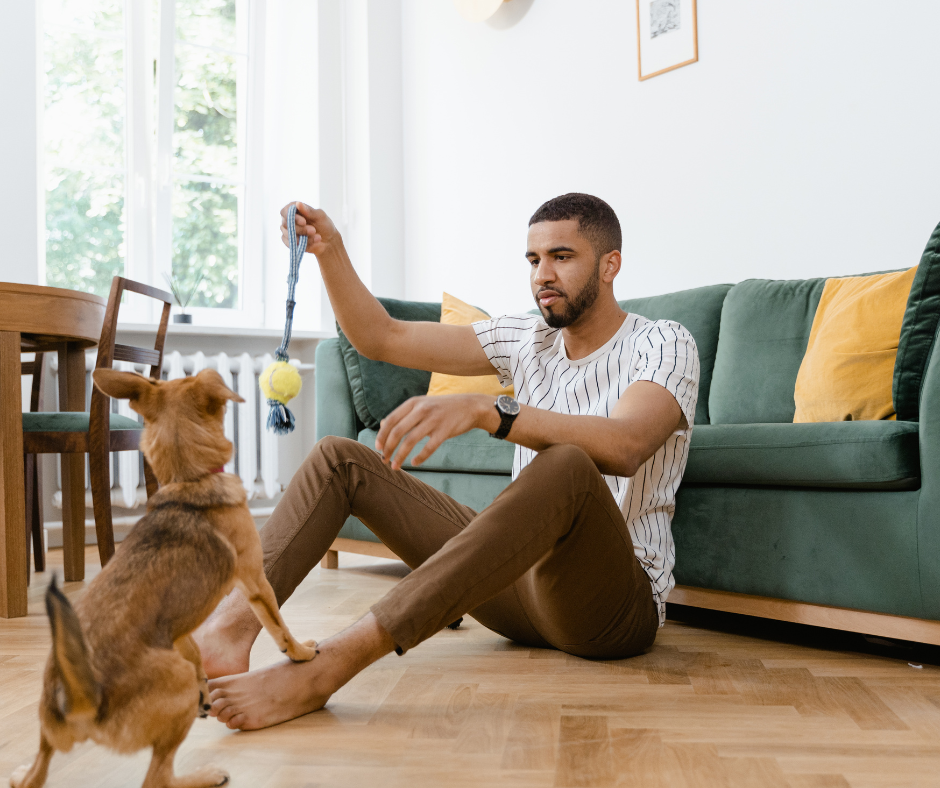How to teach dog obedience (step-by-step guide)

Obedience training is not just about teaching your dog to sit or stay—it’s about fostering clear communication, mutual understanding, and a deep bond built on trust and respect. In this comprehensive guide, we’ll dive into the world of obedience training, providing you with practical tips, expert insights, and engaging strategies to help you unlock your dog’s full potential and master obedience commands like a pro.
The Importance of Obedience
Obedience commands form the cornerstone of effective communication between you and your dog. From basic commands like sit, stay, and come to more advanced skills like heel and leave it, mastering obedience commands lays the foundation for a well-behaved and harmonious relationship. Not only do obedience commands enhance safety and control, but they also provide mental stimulation, build confidence, and strengthen the bond between you and your furry friend.
Mastering obedience commands for dogs requires patience, consistency, and effective training techniques.
Here’s a step-by-step guide to help you master obedience commands and build a strong foundation for a well-behaved and obedient dog
1. Start with Basic Commands
Begin by teaching your dog fundamental obedience commands such as sit, stay, come, down, and heel. These commands provide the building blocks for more advanced training and help establish clear communication between you and your dog.
2. Use Positive Reinforcement
Positive reinforcement is the most effective and humane way to train dogs. Reward your dog with treats, praise, or playtime whenever they correctly perform a command. This positive association encourages them to repeat the desired behavior willingly.
3. Be Consistent
Consistency is key to successful obedience training. Use the same verbal cues and hand signals for each command, and reinforce the commands consistently in various environments and situations. Consistency helps your dog understand what is expected of them and reinforces good behavior.
4. Practice Regularly
Practice obedience commands regularly in short training sessions throughout the day. Keep sessions fun, engaging, and positive to maintain your dog’s interest and motivation. Short, frequent sessions are more effective than long, tedious ones.
5. Break Commands Down into Steps
Break each command down into smaller, manageable steps to make it easier for your dog to understand and learn. For example, when teaching the “sit” command, start by luring your dog into a sitting position with a treat, then gradually fade the lure and reward them for sitting on command.
6. Be Patient and Persistent
Obedience training takes time and patience. Be patient with your dog and avoid becoming frustrated or angry if they don’t understand or respond immediately. Keep training sessions positive and upbeat, and celebrate your dog’s progress, no matter how small.
7. Use Positive Corrections
When your dog makes a mistake or doesn’t respond correctly to a command, avoid using punishment or harsh corrections. Instead, use positive redirection and gentle guidance to help them understand what you’re asking for. Redirect their focus back to the desired behavior and reward them for getting it right.
8. Proof Commands in Different Environments
Dogs don’t generalize well, so it’s essential to practice obedience commands in various environments and situations. Start training in a quiet, familiar environment, then gradually add distractions and challenges as your dog becomes more proficient. This helps reinforce the commands and ensures they’ll obey in any situation.
9. Seek Professional Help if Needed
If you’re struggling to master obedience commands or your dog is exhibiting challenging behaviors, don’t hesitate to seek help from a professional dog trainer or behaviorist. They can provide personalized guidance, tailored training plans, and expert advice to address specific issues and achieve your training goals.
10. Make Training a Positive Experience
Above all, make obedience training a positive and enjoyable experience for both you and your dog. Use plenty of praise, affection, and rewards to reinforce good behavior, and approach each training session with enthusiasm and optimism.
With time, patience, and dedication, you’ll master obedience commands and build a strong, trusting relationship with your furry companion.
Conclusion:
Mastering obedience commands is not just about achieving compliance—it’s about unlocking your dog’s full potential and nurturing a lifelong partnership based on trust, communication, and mutual respect.
So now that you’ve leant the basics, we’ll like to take your training to the next level with advanced obedience commands and skills.
From teaching your dog to walk politely on a loose leash to mastering off-leash obedience and advanced tricks, let’s explore a range of training techniques and exercises to challenge your dog’s mind, build their confidence, and expand their repertoire of skills.
With patience, practice, and perseverance, you’ll unlock your dog’s full potential and take your training to new heights.
Advanced training techniques to unlock your dog’s full potential
Advanced training techniques can take your dog’s obedience skills to the next level, challenging their mind, building their confidence, and expanding their repertoire of behaviors. Here are some advanced training techniques that you can teach your dog:
1. Off-Leash Obedience
Teaching your dog to respond reliably to obedience commands even when off-leash is a valuable skill that requires advanced training.
Start by reinforcing obedience commands in a controlled, enclosed area before gradually transitioning to off-leash environments with distractions.
Use high-value rewards and maintain a strong focus on your dog’s attention and responsiveness.
2. Distance Commands
Extend the range of obedience commands by teaching your dog to respond from a distance.
Start by reinforcing basic commands like sit, stay, and come at short distances, then gradually increase the distance between you and your dog.
Use visual and verbal cues to communicate commands from a distance, and reward your dog for accurate responses.
3. Advanced Tricks and Behaviors
Teach your dog a variety of advanced tricks and behaviors to keep training sessions fun and engaging. This can include tricks like roll over, play dead, fetch specific items by name, weave between legs, or even agility skills like jumping through hoops or navigating obstacle courses.
Break down complex behaviors into manageable steps and use positive reinforcement to encourage your dog’s progress.
4. Boundary Training
Teach your dog to respect boundaries and stay within designated areas, both indoors and outdoors.
Use visual markers or boundary flags to define boundaries, and reinforce obedience commands like stay or wait when approaching or crossing boundaries.
With consistent practice, your dog will learn to respect boundaries and stay within designated areas without the need for physical barriers.
5. Scent Work and Tracking
Engage your dog’s natural scenting abilities by teaching them scent work and tracking skills. Start by introducing your dog to different scents and rewarding them for indicating the scent source.
Gradually increase the difficulty by hiding scent samples in various locations and teaching your dog to track and find them using their nose.
Scent work is mentally stimulating and provides a rewarding outlet for your dog’s natural instincts.
6. Advanced Leash Walking
Refine your dog’s leash walking skills by teaching them to walk politely on a loose leash in a variety of environments and distractions.
Use techniques like leash pressure, directional cues, and attention exercises to encourage your dog to walk calmly by your side without pulling or lunging.
Practice walking in different settings and gradually increase distractions to reinforce good leash manners.
7. Canine Sports and Activities
Explore various canine sports and activities that challenge your dog both mentally and physically.
This can include activities like agility, obedience trials, rally obedience, nose work, flyball, or even canine freestyle.
Participating in these activities provides opportunities for your dog to showcase their skills, build confidence, and strengthen your bond through teamwork and collaboration.
8. Behavioral Problem Solving
Use advanced training techniques to address specific behavioral challenges or problem behaviors your dog may exhibit.
Whether it’s fearfulness, aggression, separation anxiety, or compulsive behaviors, working with a qualified professional trainer or behaviorist can help you develop targeted training plans and behavior modification strategies to address these issues effectively.
When teaching advanced training techniques, remember to keep training sessions fun, engaging, and positive for your dog. Use plenty of rewards, praise, and encouragement to reinforce desired behaviors and maintain your dog’s motivation and enthusiasm for learning.
With patience, consistency, and dedication, you and your dog can master advanced obedience skills and enjoy a rewarding training journey together.




